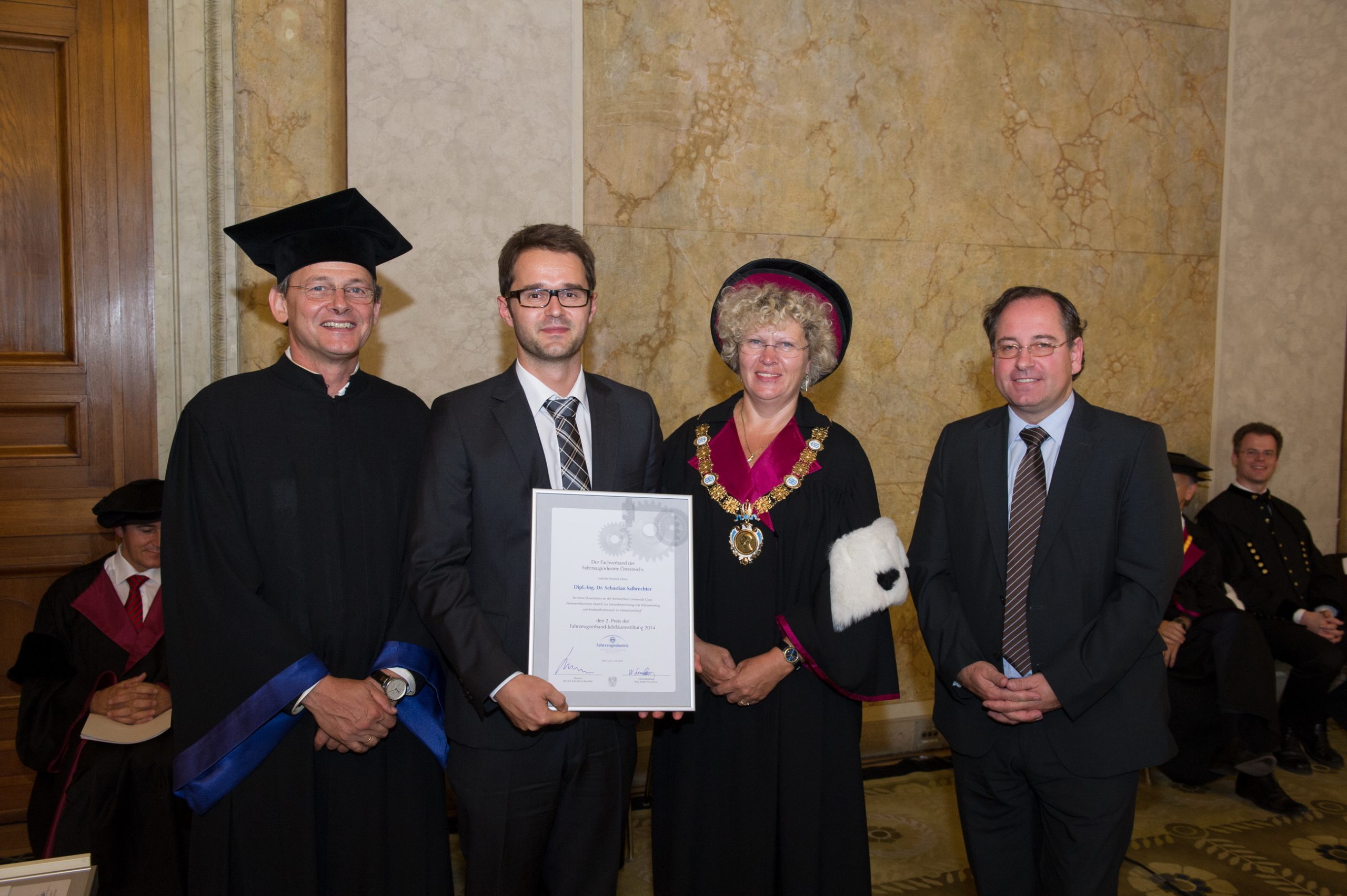Award for Sebastian Salbrechter’s Dissertation
Award for Sebastian Salbrechter’s Dissertation
On the 2nd of July 2015 the award ceremony of the Fahrzeugverband-Jubiläumsstiftung 2014 took place. Since 1984 the foundation creates a bridge between industry and science. This is how the cooperation of the university presidents and senates of the Universities of Technology of Vienna and Graz, and the trade association of the automobile industry was created. From then onwards the interest yield of the foundation has been awarded to those students writing a thesis or a dissertation, whose papers are of exceptional value and interest to the automobile industry of Austria. This should create an incentive for students to engage with innovative and original topics in a scientific manner, also as preparation for their future jobs.
In European countries the average driving distance for passenger cars is only 5 km, resulting in operating temperatures which lie far from the optimum. This leads to a considerable and unwanted additional consumption. The consumption difference between an engine at operating temperature and a car started at 20°C in the European driving cycle (NEDC) lies at 10% and shows great potential in this area. The additional consumption is essentially attributed to higher engine friction at lower temperatures. For a realistic projection of the fuel consumption a highly accurate simulation of the engine, friction and particularly the heat input is decisive.
Dr. Salbrechter has conducted extensive investigations under his dissertation on the derivation of parameter-based models for the simulation of the heat input and the consumption of the engine warm-up of cars. The DoE-based and especially the physically derived model of the consumption and the heat input show excellent results for the studied engine types in different test-cycles and pre-calibrations. Altogether this makes a universal simulation of the engine warm-up possible, which can also take differences in engine application into consideration. The requirement of expensive and time-consuming test bed experiments can be significantly reduced with this method.
For me it is obviously a big honour to be awarded the second place of the Fachverband-Jubiläumsstiftung. I am especially proud, that the trade association recognized the degree of novelty of the paper and therefore deemed it to be particulary interesting for the Austrian automobile industry.” -Dr. Sebastian Salbrechter

